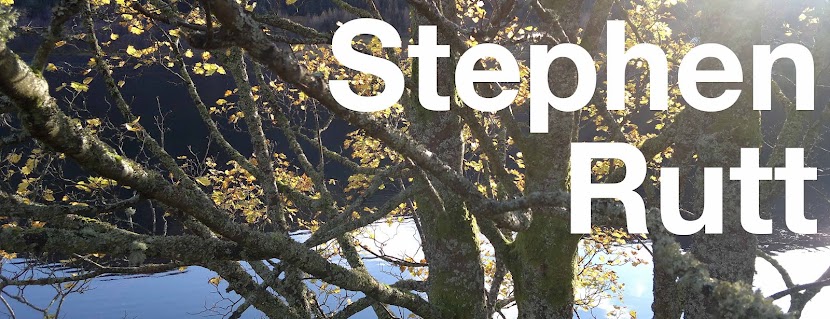It could have been a scene from Scandinavia: the silver birch and the rusting bracken, thick dark mud and lashing hail. It lasted for two skin stinging minutes. The wood thinned out. Bracken gave way to heather, the hail to the numbing wind, and the path to a bridleway of finest sludgey mud, studded with white ice. Half a kilometre over the heath to a clump of pines where the Parrot Crossbills are and the clouds break up; the last hour or so of sunlight appearing over the distant pines. All around was heather, oak, pine and birch; damp and glittering in the light. It is tempting to lose yourself in this landscape that feels so old and right and proper.
It is not Scandinavia. Not even Scotland. It is Nottinghamshire.
Behind the pines on the horizon the black edge of a slag heap can be seen. The product of a hundred or so years of removing useful things from the earth and putting it back somewhere else. The map is ridden with names that tell my dad - Nottinghamshire lad - of the old pits and collieries that were shut as he grew up. They're just names on a map to me. Further back, and the animals that would've kept this area open and unwooded have been replaced by conservationists, counter intuitively pulling out trees in the name of nature. It's in the name: Budby Common. Ignore the fences passed on the way here and it still appears like the common lands of a John Clare
poem, though lacking in its people.
Curious landscape paradox. It is deeply coloured by human hand yet it looks and feels untouched.
Parrot Crossbills. Large red finches from Scandinavia, they are rarities that turn up on the back of a poor pine seed crop in the Arctic taiga, in search of food. I had
tried and failed to see them elsewhere three times this winter. The itinerant nature that brings them here also makes them hard to catch up with. This time felt luckier. A birder we had met on the way here had successfully seen them and gave us directions to the pines on this heath.
We were not lucky. Damp and cold, we saw Common Buzzards shrieking over the woods and Jays flash exotically against the sky, but nothing particularly out of a birder's idea of the ordinary. It's only on the long dark train ride home that I begin to wonder why we do it. Why I, in particular, turn my nose up at the idea of twitching, but continually return to places where Parrot Crossbills have been seen and will be seen by seemingly everybody but me. I don’t keep doing it for the dubious honour of being Britain’s unluckiest birder.
I’ve been birding for eight years to general apathy from friends and occasional hostility from others. But oddly there’s been a recent flourishing of interest from several people, mostly focusing on why we do it, why we ‘just look at them?’. It’s a question that opens a gap of mutual incomprehensibility. They can’t understand the interest, and I can’t understand why they’re not. I have to explain my hobby and the seeming irrationality of it.
I’ve always been interested in animals, since childhood visits to the zoo, watching birds on the garden feeders and being sat in front of the Lion King and Free Willy, my favourite films as a kid. I’ve been a fisherman - fly and coarse - but thankfully never a hunter. I found watching wild animals to be the best route to knowing and to experiencing nature with as minimal an impact as possible. I would feel the thrill of catching a fish between the waits that seemed like they would never end. I would feel conflicted about hauling it on to land, looking at it, then putting it back. Better to have never taken it out in the first place? I recognise that need though, the drive that makes the fisherman spend days on the lakeside, waiting for the elusive fish bite. I don’t know why millions of people will watch Attenborough documentaries, but never try to seek out nature for themselves, unmediated and with the intimacy of real experience.

I will keep trying to get to know nature. Nature may be amorphous and defies definition at every attempt, but for me that’s part of the attraction. It is at once full of things to learn and full of things that are unknowable. It takes me to silent places and a horizon without houses, but lets me hear the beating of my heart, and hold conversations with the most interesting people.
The box-ticking, blinkered, crowd mentality of twitching is something I find very distasteful, but with my attempted twitches of Parrot Crossbills it’s taken me to new places, on the Essex coast and in my own home county. It’s shown me the loveliest part of Nottinghamshire.
All without the actual birds.
All in the act of just looking.





.jpg)


































